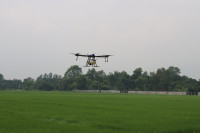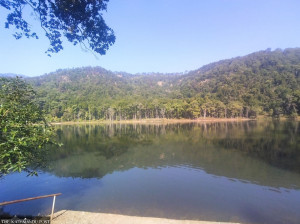Sudurpaschim Province
In the Far-west, a significant chunk of budget goes into temple construction
The Far-west is the country’s poorest province where 33.9 percent of people are under the poverty line. But the sight of the local units and people’s representatives is apparently somewhere else—on the temples..jpg&w=900&height=601)
Basant Pratap Singh
Sudurpaschim Province’s Ministry of Industry, Tourism, Forests and Environment allocated Rs300,000 to construct a wall for “Devjhadi Temple” in Patan Municipality Ward No. 6 in Baitadi in the current fiscal year. But there is no such temple in that place.
So the ward chairman, Rajendra Bista, proposed that the budget should be used to construct a wall outside the Devthali Temple instead.
“We couldn’t find any temple called Devjhadi, so I proposed the wall be made in Devthali,” Bista said.
This is not the first instance of erroneous budget allocation for a non-existent enterprise. Last year, when the federal ministry of tourism published the list of 100 best destinations in the country, a certain “Gorakhnath Temple” in Daula Gaun was mentioned, much to the confusion of the local residents.
“I don’t know any temple called Gorakhnath in my village,” Dhanasari Daulyal, a local of Daula Gaun, told the Post.
The Post found the said Gorakhnath Temple, but it is a private one.
The shrine is exclusively worshipped by 40-odd Singh households in Daula Gaun, and it is located about 50 metres away from the lawmaker Bhairab Bahadur Singh’s house. It’s not clear how this private temple made in the list of 100 tourism destinations in the country.
A budget of Rs 5 million was earmarked to develop the temple in the last fiscal year. The same amount has been allocated for the temple this fiscal year.
The Far-west is the country’s poorest province where 33.9 percent of the people are below the poverty line. But the sight of the local units and people’s representatives is apparently somewhere else—on the temples, mostly those that are worshipped by the representatives’ family and relatives.
The provincial ministry has allocated Rs 327.7 million for the development of 357 religious sites across nine districts in the province this fiscal year.
This includes Rs 32 million allocated to the temples and holy sites in Baitadi, the home district of Maya Bhatta, the provincial minister of tourism. There are 67 temples and religious sites in Baitadi that are currently being built or getting a facelift; 45 in Kailali; 47 in Achham; 24 in Bajhang; and 26 in Kanchanpur.
Bhatta told the Post that the budget for the development and upkeep of temples and religious sites were distributed proportionately.
The Far-west is a province of 26,15,448 people; of them, 16,29,200 million people struggle daily to make ends meet, according to data by the provincial Ministry of Land Management, Cooperatives and Agriculture.
Lawmakers representing the region have invested the budgets allocated under “infrastructure development partnership programme” on temple construction as well.
According to Krishna Bahadur Mahara, a tourism entrepreneur and a member of Nepal Tourism Board, Rs 2.5 billion was allocated for temple construction in the province in the last two fiscal years.
“The allocation of huge budget for temple construction alone is surprising,” said Mahara. “But the budget is being misused as well, in that the leaders distribute the money to their cadres as well.”
While the leaders have poured in money for temples of their liking, those that actually need a facelift are ignored. The illustrious Pancha Deval temple, in Devhat in Baitadi, lies in a dilapidated state but the Durga Temple, which is 100 metres away from Pancha Deval where 30 Bogati families worship, has received Rs600,000 from the Dashrath Chand Municipality.
The provincial ministry added Rs380,000 last year to construct a wall outside the temple. The wall has already collapsed.
Moreover, last year, the provincial ministry allocated Rs1.4 million for the construction of Muthipata Temple in Chimadigaun, Bajhang, under the drive to identify tourism hubs. But none of that amount was used to construct the temple. The budget went in the construction of a local Khadka Chimadi’s house. Chimadi admitted that his house was constructed with the budget from the provincial government.
“There are two big rooms: one for hall, another is bedroom,” Chimadi told the Post.
But Paramananda Chimadi, a local leader of Nepal Communist Party, said that the said building is not a house but a temple.
“This looks like a house, but it’s a temple,” he said. “The only thing remaining is to add a metal crown to identify it as a temple.”
But not everyone is fooled. Many locals and tourism entrepreneurs the Post talked to said that the people’s representatives are indulging in financial embezzlement in the veneer of the construction of temples. “The reason why the Far-west is not developed is not due to the lack of resources or budget but the misuse of budget,” Mahara, the tourism entrepreneur, said.




 19.12°C Kathmandu
19.12°C Kathmandu












